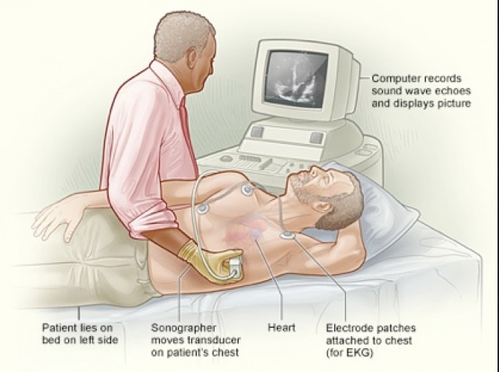Stress Test
TMT Or Stress Test
It is very common to find the heart patients who have normal ECG. One must remember that the ECGs are taken at rest when the heart is beating at its lowest rate. In some of cases the patient would also agree that at the time of rest there is no pain in the chest, the angina symptoms would only come when they increase the heart rate, while doing some physical exertion like walking.
In this condition,where we need a TMT test. The patients might gradually increase their heart rate, thus increasing the blood requirement of the heart muscles. Simultaneously ECG records are taken.
Patients have to physically bring to bear for this test which uses a computerised machine. The continuous ECG monitoring during the exercise would reflect to the blood and oxygen deficit in the muscles of the heart during the exercise.
The level of mechanical stress is progressively increased by adjusting the difficulty (steepness of the slope) and speed. The test administrator or attending physician examines the symptoms and blood pressure response. With use of ECG, the test is most commonly called a cardiac stress test but is known by other names, such as exercise testing, stress testing treadmills, exercise tolerance test, stress test or stress test ECG.
A stress test may also use an echo cardiogram (ultrasonic imaging of the heart) or a nuclear stress test (in which a radioisotope is injected into the bloodstream).

TMT test is also called as Exercise Stress Test, Computerized Stress Test or simply Stress test. It is the very easy, popular and common test performed on heart patients to determine the severity of the heart disease. Taken at an interval, this test can also show the improvement or deterioration of patient’s angina.
A negative TMT or Stress Test is declared when the patient can reach a certain heart rate without showing any ECG changes. This rate is known as target heart rate and it is also calculated by a formula (Target Heart Rate = 220 – age of patient). If this rate is reached by the patient without producing any ECG changes, though the TMT can be called negative, but it would not mean that the blockage is zero. It is meant only by the person performing the test probably has a blockage of less than 70%.
A Cardiac Stress Test (also referred to as a cardiac diagnostic test, cardiopulmonary exercise test, or abbreviated CPX test) is a cardiological test that measures a heart’s ability to respond to external stress in a controlled clinical environment. The stress response is induced by exercise or by drug stimulation.
Cardiac stress tests compare the coronary circulation while the patient is at rest with the same patient’s circulation during maximum physical exertion, showing any abnormal blood flow to the myocardium (heart muscle tissue). The results can be interpreted as a reflection on the general physical condition of the test patient. This test can be used to diagnose coronary artery disease (also known as ischemic heart disease) and assess patient prognosis after a myocardial infarction (heart attack).
The cardiac stress test is done with heart stimulation, either by exercise on a treadmill, pedalling a stationary exercise bicycle ergometer, or with intravenous pharmacological stimulation, with the patient connected to an electrocardiogram (ECG). People who cannot use their legs may exercise with a bicycle-like crank that they turn with their arms.